Current AI Trends and Future Projections
In the last decade, Artificial Intelligence (AI) has rapidly evolved from a theoretical concept to a practical tool, transforming numerous industries. Its true potential, however, is yet to be fully realized. With the capacity to add an estimated $4.4 trillion to the global economy annually, AI developments in the coming years represent one of the most significant economic opportunities of our time. However, like any transformative technology, AI also presents challenges and risks.
Key trends shaping the future of AI include:
1. AI Changes The Way We Work
AI is poised to dramatically alter the dynamics of the workplace. Existing AI technologies could automate work activities that currently occupy 60% to 70% of employees’ time. There’s a growing acceptance of AI and machine learning among workplace leaders, with over 50% in the Americas and Europe welcoming its adoption. AI is already being used for tasks like note-taking and generating reports, emails, and presentations. Services like Otter AI, which transcribes meetings and provides summaries, have seen massive growth. Entire industries, such as recruitment, are being transformed by AI. This shift may lead to increased discussions and implementations of Universal Basic Income (UBI) schemes to provide a safety net as certain jobs become automated.
2. AI Gets Smarter
AI technology continues to advance rapidly. Large Language Models (LLMs) like OpenAI’s ChatGPT and Google’s Gemini are becoming increasingly sophisticated. GPT-5 is anticipated to be a significant leap forward, addressing factual inaccuracies present in earlier versions. Competitors like Anthropic’s Claude AI are also emerging, often with a focus on ethical AI development. The continuous improvement in AI capabilities will lead to new applications and efficiencies across various sectors.
3. AI Evolves As A Software Development Tool
AI is significantly disrupting software development. Concepts like “vibe coding,” where AI generates code from plain-language prompts, are gaining traction. AI can also review and test code, detect bugs, and errors, accelerating the development process by at least 25%. Platforms like GitHub Copilot, which uses AI to assist developers in writing code, are widely adopted, with nearly half of the code on the platform now AI-generated. Other tools like Google’s Gemini Code Assist and Amazon’s Q Developer are also making significant inroads. Smaller companies like Tabnine and Magic AI are innovating with features like AI-powered test generation and large context windows, pushing towards Artificial General Intelligence (AGI), though AGI is not widely predicted to be achieved until 2300.
4. AI Changes The Finance Landscape
AI-powered improvements in productivity could add an extra $340 billion of value per year to the banking sector if all potential use cases are implemented. AI is expected to increase the industry’s profits significantly.
AI’s Impact on Energy Consumption and Data Centers
The rapid expansion of AI, particularly large language models and generative AI, is leading to a significant surge in electricity demand from data centers. Projections indicate that global electricity demand from data centers could more than double by 2030, reaching around 945 terawatt-hours (TWh). This growth rate, estimated at around 15% per year from 2024 to 2030, is more than four times faster than the overall growth of electricity consumption.
In the United States alone, BloombergNEF forecasts that data center power demand will more than double by 2035, rising from nearly 35 gigawatts in 2024 to 78 gigawatts. Some research suggests that AI’s energy use already accounts for as much as 20% of global data center power demand. By 2028, a projected 12% of all U.S. electricity demand could be driven by data centers.
This escalating energy consumption raises significant environmental concerns. Data centers are not only voracious consumers of electricity, often sourced from fossil fuels, but they also contribute to electronic waste. Furthermore, the cooling systems required for these powerful data centers consume vast amounts of fresh water, which is then evaporated into the atmosphere. This growing demand for power contributes to increased global emissions and places a strain on existing energy grids.
Addressing these challenges will require a multi-faceted approach, including:
•Improving energy efficiency: Developing more energy-efficient AI models and hardware.
•Renewable energy sources: Powering data centers with renewable energy sources like solar and wind.
•Innovative cooling solutions: Implementing advanced cooling technologies that reduce water consumption.
•Sustainable data center design: Designing and building data centers with sustainability in mind from the outset.
AI’s Impact on the Workforce Across Different Sectors
The AI revolution is poised to profoundly reshape the global workforce, leading to both job displacement and the creation of new opportunities. While AI-related innovation may cause near-term job losses in certain areas, it is also expected to ultimately generate new roles and improve job quality by automating mundane tasks.
Job Displacement and Automation:
AI is accelerating automation across various sectors, primarily affecting occupations whose core tasks can be easily replicated by machines. Studies suggest that by 2030, a significant percentage of employees, potentially as high as 14% of the global workforce (375 million people), may be forced to change their careers due to AI. The World Economic Forum’s Future of Jobs Report 2025 indicates that 40% of employers anticipate reducing their workforce where AI can automate tasks. This impact extends beyond traditional manual labor, influencing roles that require creativity or complex cognitive skills, which were once considered immune to automation.
Job Creation and Transformation:
Despite concerns about job displacement, AI is also a powerful engine for job creation. It is estimated that 20-50 million new jobs could emerge by 2030, particularly in sectors like healthcare, pharmaceuticals, and other high-tech industries. AI is not just replacing jobs but also enhancing existing ones by taking over repetitive or data-intensive tasks, allowing human workers to focus on more complex, creative, and strategic activities. This shift can lead to improved job quality and increased productivity.
Sector-Specific Impacts:
•Manufacturing and Logistics: These sectors are likely to see significant automation of routine tasks, leading to increased efficiency but also potential displacement of manual labor. New jobs may emerge in AI system maintenance, programming, and oversight.
•Healthcare: AI is transforming diagnostics, drug discovery, personalized treatment plans, and administrative tasks. This will create demand for AI specialists in healthcare, data analysts, and professionals who can work alongside AI systems to deliver better patient care.
•Finance: AI is already impacting areas like fraud detection, algorithmic trading, and customer service. The sector will see a demand for AI-savvy financial analysts, risk managers, and cybersecurity experts.
•Education: AI will personalize learning experiences and automate administrative tasks. This could lead to new roles for AI-powered educational content creators, tutors, and learning facilitators.
•Creative Industries: While some creative tasks can be augmented by AI, human creativity, critical thinking, and emotional intelligence will remain paramount. New roles may emerge in AI-assisted design, content generation, and artistic collaboration.
•Information Technology: The IT sector will continue to be a major beneficiary of AI, with high demand for AI researchers, machine learning engineers, data scientists, and AI ethicists.
The Evolving Nature of Work:
The integration of AI will necessitate a significant shift in required skills. There will be a growing emphasis on skills that complement AI, such as critical thinking, problem-solving, creativity, emotional intelligence, and adaptability. Continuous learning and upskilling will become crucial for workers to remain relevant in an AI-driven economy. Industries with a higher proportion of AI-exposed workers are already experiencing growth and increased wages for those with AI skills, indicating a premium on AI literacy and expertise.
In essence, the future workforce will be characterized by a symbiotic relationship between humans and AI, where AI handles routine and data-intensive tasks, freeing up human potential for innovation, complex decision-making, and interpersonal interactions. The challenge lies in managing the transition, ensuring equitable access to reskilling opportunities, and developing policies that support workers through this transformative period.
The Impact of Superintelligence on Mathematics and Mathematicians
The advent of AI, and the potential for future superintelligence, is set to revolutionize the field of mathematics. While some may fear that AI will replace human mathematicians, the consensus among experts is that AI will serve as a powerful tool to augment and enhance human mathematical abilities, rather than rendering them obsolete. The goal is to create a symbiotic relationship where AI handles complex calculations and data analysis, while humans provide the intuition, creativity, and strategic direction.
AI as a Mathematical Assistant:
AI is already demonstrating its potential to assist mathematicians in several ways:
•Proof Development: AI can help verify and even generate parts of mathematical proofs. This can significantly speed up the process of mathematical discovery, which can often take decades.
•Conjecture Generation: AI can analyze vast datasets and identify patterns that may not be apparent to human mathematicians, leading to the formulation of new and interesting conjectures.
•Solving Complex Equations: AI-based methods are being developed that can solve complex equations faster and with less computing power than traditional supercomputers.
•Lowering Barriers to Entry: AI can provide personalized tutoring and support, making it easier for individuals from diverse backgrounds to enter the field of mathematics.
The Future of Mathematical Research:
Initiatives like DARPA’s Exponentiating Mathematics (expMath) program and the National Science Foundation’s AI institutes are actively exploring how to harness the power of AI to accelerate mathematical discovery. The development of “mathematical superintelligence” is an ambitious goal, with companies like Harmonic aiming to build AI systems that not only solve problems but also generate new mathematical concepts.
While AI has already shown impressive problem-solving skills, the question of whether it can make genuine theoretical discoveries without human intervention remains a topic of debate. However, it is clear that AI will be an indispensable tool for future mathematicians, enabling them to tackle more complex problems and push the boundaries of mathematical knowledge.
The Role of the Human Mathematician:
In a world with superintelligent AI, the role of the human mathematician will evolve. While AI may handle the more mechanical aspects of mathematics, humans will still be needed for:
•Formulating interesting questions: Identifying the most important and fruitful areas of mathematical inquiry.
•Providing intuition and creativity: Guiding the AI’s search for solutions and interpreting its results.
•Ensuring ethical and responsible use of AI: Making sure that AI is used in a way that benefits humanity.
Ultimately, the future of mathematics will be a collaborative effort between humans and AI, with each bringing their unique strengths to the table. This partnership has the potential to unlock unprecedented progress in mathematics and its applications in science and technology.
Future Curriculum at Our Education
The pervasive influence of AI will necessitate a significant transformation in educational curricula, from K-12 to higher education and lifelong learning. The goal will be to equip students with the skills and knowledge necessary to thrive in an AI-driven world, fostering both AI literacy and human capabilities that complement artificial intelligence.
Key Shifts in Educational Curricula:
•Personalized Learning: AI will enable highly personalized learning experiences, adapting to individual student needs, learning styles, and paces. AI algorithms can identify knowledge gaps, recommend tailored resources, and provide immediate feedback, making education more efficient and effective. This will shift the role of educators from primary knowledge dispensers to facilitators and mentors.
•Focus on AI Literacy and Ethics: Understanding AI will become as fundamental as digital literacy. Curricula will integrate topics such as:
•Fundamentals of AI and Machine Learning: Basic concepts, how AI works, and its applications.
•Data Literacy: The ability to understand, interpret, and critically evaluate data, which is the fuel for AI.
•Ethical Considerations in AI: Discussions around bias, privacy, accountability, and the societal impact of AI will be crucial to ensure responsible development and deployment of AI technologies.
•Human-AI Collaboration: Teaching students how to effectively work alongside AI tools and systems.
•Emphasis on Human-Centric Skills: As AI automates routine tasks, the demand for uniquely human skills will increase. Curricula will place a greater emphasis on:
•Critical Thinking and Problem-Solving: The ability to analyze complex situations, identify problems, and develop innovative solutions.
•Creativity and Innovation: Fostering original thought and the capacity to generate new ideas.
•Communication and Collaboration: Effective interpersonal skills for working in diverse teams.
•Emotional Intelligence and Empathy: Understanding and managing emotions, both one’s own and others
•Adaptability and Resilience: The capacity to navigate change and uncertainty in a rapidly evolving world.
•Interdisciplinary Approaches: Traditional subject boundaries will blur as AI applications span across disciplines. Curricula will adopt more interdisciplinary approaches, connecting concepts from science, technology, engineering, arts, and mathematics (STEAM) to real-world AI challenges.
•Project-Based Learning: Learning by doing will become more prevalent, with students engaging in hands-on projects that involve AI tools and address real-world problems. This will foster practical skills and a deeper understanding of AI’s capabilities and limitations.
•Lifelong Learning: The rapid pace of technological change will make lifelong learning a necessity. Educational institutions will need to offer flexible and accessible programs for upskilling and reskilling the workforce throughout their careers.
In essence, the future of education will move beyond rote memorization to cultivate a generation of critical thinkers, creative problem-solvers, and ethical AI citizens who can leverage AI for societal benefit. The curriculum will be dynamic, continuously evolving to keep pace with AI advancements and the changing demands of the future workforce.
Conclusion: Navigating the AI Revolution
The AI revolution, unfolding over the next decade, promises to be as transformative as the Industrial Revolution, reshaping every facet of human existence. From the fundamental ways we work and interact with technology to the very fabric of our educational systems and our relationship with energy, AI’s influence will be profound and far-reaching. While the challenges are significant—particularly concerning energy consumption, job displacement, and ethical considerations—the opportunities for unprecedented progress are equally immense.
Successfully navigating this revolution will require proactive and collaborative efforts from governments, industries, educational institutions, and individuals. Investing in sustainable energy solutions for data centers, fostering continuous learning and reskilling initiatives for the workforce, and adapting educational curricula to cultivate AI literacy alongside uniquely human skills will be paramount. The integration of superintelligence into fields like mathematics will not diminish human intellect but rather amplify it, opening new frontiers of discovery.
Ultimately, the future shaped by AI will depend on our collective choices. By embracing innovation responsibly, prioritizing ethical development, and investing in human potential, we can harness the power of AI to create a more prosperous, equitable, and sustainable future for all.
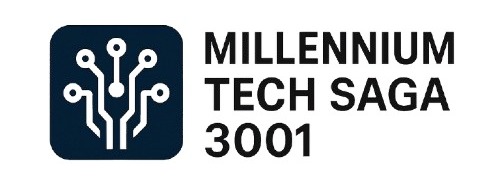

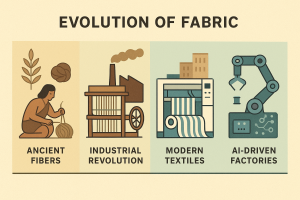
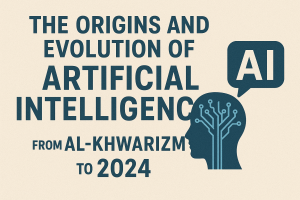
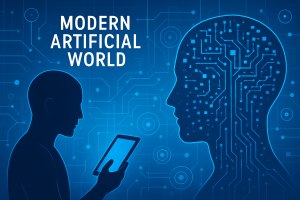
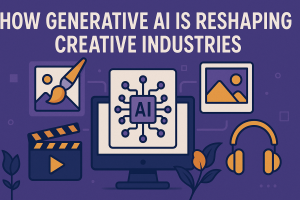
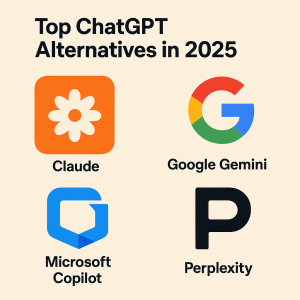
Be First to Comment